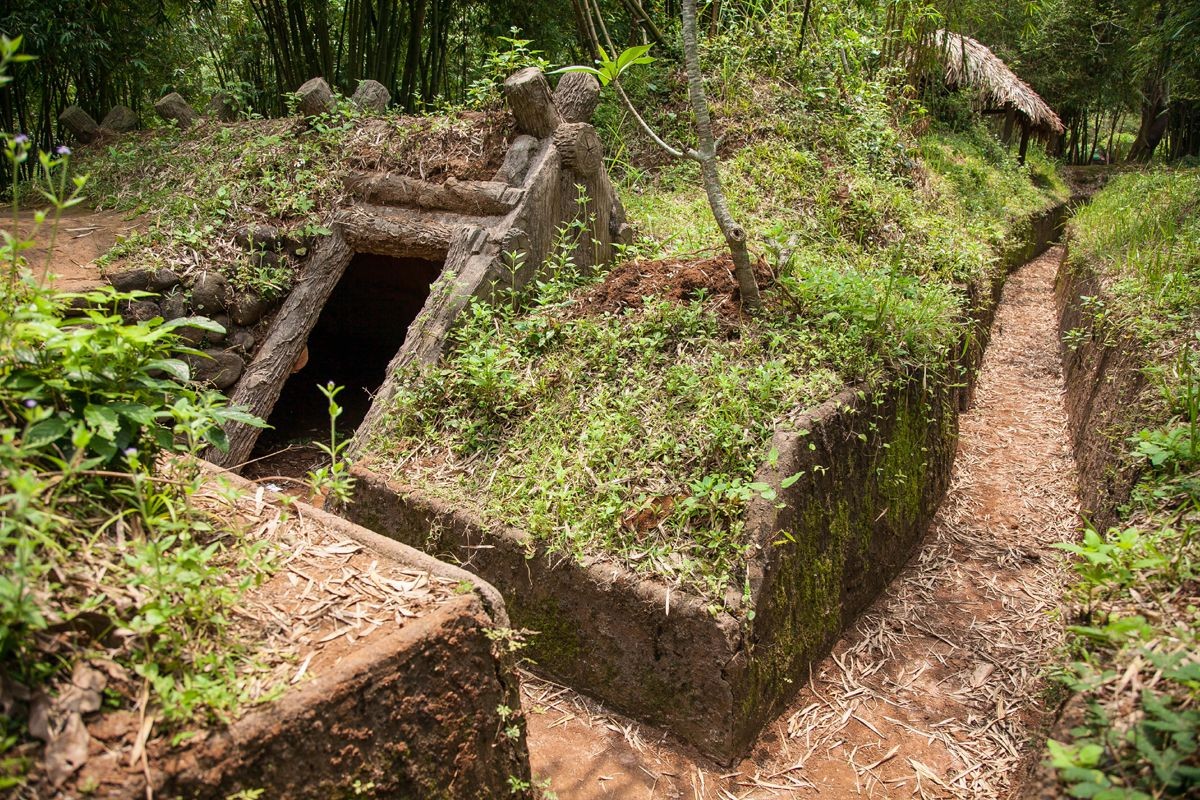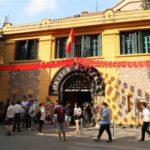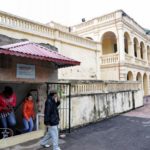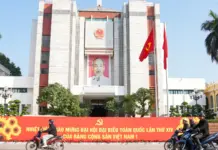Vinh Moc is a picturesque rural village nestled amidst red soil hills and situated near the coast. This charming village is located approximately 14km east of Ho Xa town in the Vinh Linh district. Additionally, it is only 6km north of Cua Tung.
One notable feature of Vinh Moc is its proximity to the DMZ, a tunnel complex that played a significant role during the Vietnam War. This complex is situated to the south of the China Sea and to the north of the Ben Hai River. The historical significance of this area makes Vinh Moc an intriguing destination for history enthusiasts and those interested in learning more about the war.
Within this complex, the Vinh Moc tunnel is located in Vinh Moc, Vinh Thach Commune, Vinh Linh District, Quang Tri Province. The complex in Vinh Linh has more than 60 tunnels such as Tan My, Mu Giai, and Tan Ly tunnels. Among these tunnels, Vinh Moc is the most solid and firm village tunnel, with 3 floors and a round staircase, remaining exactly as it was in the past.
 |
| Photo: Khoahocdoisong |
This historic relic, known as the Underground Tunnels, was meticulously constructed over a span of two years, from 1965 to 1967. It consists of a series of interconnected underground tunnels stretching over an impressive total length of 1700m. These tunnels serve as a fascinating testament to the ingenuity and engineering prowess of the builders.
The tunnel boasts a three-story structure, with the top floor sitting at a depth of 8-10m, the second floor at a depth of 12-15m, and the third floor at a profound 23m. The various floors and their corresponding branches are seamlessly interconnected by a main axis spanning an impressive length of 780m.
 |
| Photo: Khoahocdoisong |
The html content is already well-written and doesn’t require any improvements.
Incredibly, approximately 60 families found refuge in the tunnels, with an astonishing 17 children being born within their subterranean confines. Remarkably, the tunnels proved to be instrumental in safeguarding the lives of the villagers, as not a single person perished during this harrowing period. The tunnels even withstood a direct hit from an explosive device, which fortunately failed to detonate, resulting in a ventilation shaft being ingeniously fashioned from the resulting hole.
During nearly 2,000 days and nights in the tunnels, the people of Vinh Moc demonstrated their incredible resilience and determination. Their story has become a legend, showcasing the amazing vitality and courage of humanity. Even in the heart of the tunnels, life continued to flourish. In fact, 17 babies were born during this time, a testament to the indomitable spirit of the people. Despite the numerous challenges they faced, the community managed to sustain their activities and carry on with their daily lives.
 |
| Photo: Bao Lao Dong |
Vinh Moc tunnel is a remarkable achievement that showcases the determination and resilience of Quang Tri’s army and people. Over a period of 18,000 days, this incredible work was constructed amidst constant bomb attacks. The extraordinary strength and intelligence of those involved enabled them to transport and place 6000m3 of soil and rock to bring the tunnel to completion. This accomplishment stands as a testament to the indomitable spirit and resourcefulness of the individuals who built it.
“Their official name is the Son Vinh Tunnels,” stated one designer who observed the construction. “We have been calling them Son Vinh Tunnels since the beginning. The name Son refers to the mountainous region, and Vinh represents not just Vinh Moc, but also the Vinh Linh residents. The locals from Son Trung and Son Ha communes, as well as the border-post personnel, also played a significant role in the construction of these tunnels.”
 |
| Photo: Khoahocdoisong |
In 2014, the Vinh Moc Tunnels was officially designated as a special national relic, solidifying its status as a historical destination that draws in a diverse range of tourists.
Even after many years, the Vinh Moc Tunnels have remained a popular tourist destination for both domestic and international travelers. Visitors from abroad are particularly eager to experience and explore the tunnels, leading to a constant stream of guests throughout the year.
 |
| Photo: Phong Nha Explorer |
The tunnels are renowned not only for the exceptional efforts of the builders but also for the meticulous brilliance of their design. Each kitchen required chimneys that had to disperse smoke without drawing the attention of enemy planes, a demanding task for any war-time designer.
When designing the underground channels, the creators showed great foresight by prioritizing both their construction and protection. These channels are built to withstand damage from prolonged tropical rains and monsoons. Architects are eager to visit and study this historical shelter to learn from their predecessors’ success in creating such a complex, massive, yet sturdy and habitable space.
 |
| Photo: The Bomb Shelter |
With its significant historical significance, the Vinh Moc tunnel was officially recognized as a historical and cultural relic by the Ministry of Culture and Information in 1976 (now known as the Ministry of Culture, Sports and Tourism). This recognition highlights the importance of the tunnel in preserving Vietnam’s rich cultural heritage. Furthermore, in 2014, the Vinh Moc tunnel relic received further distinction as a special national relic, solidifying its status as an invaluable treasure of Vietnam’s history.
 |
| Photo: Phong Nha Explorer |
Writer Chu Lai: War and Literature
The war in Vietnam has been over for nearly 40 years and many soldiers have returned home with unforgettable memories. One of them is Chu Lai, a prolific author who has not only won the people’s respect for his famous stories about war and the post-war era, but also for his dramatic stage and movie work.
Secret War Bunker in Thang Long Citadel
The underground bunker is located west of the Department of Operations, the General Staff of the Vietnam’s People Army in the imperial citadel of Thang Long in downtown Hanoi. It played an important role in the American war, especially during the 12 days and nights of the Hanoi-Dien Bien Phu air battle 40 years ago. Recently, the bunker was restored by the Thang Long Heritage Preservation Centre and was officially opened to tourists.








